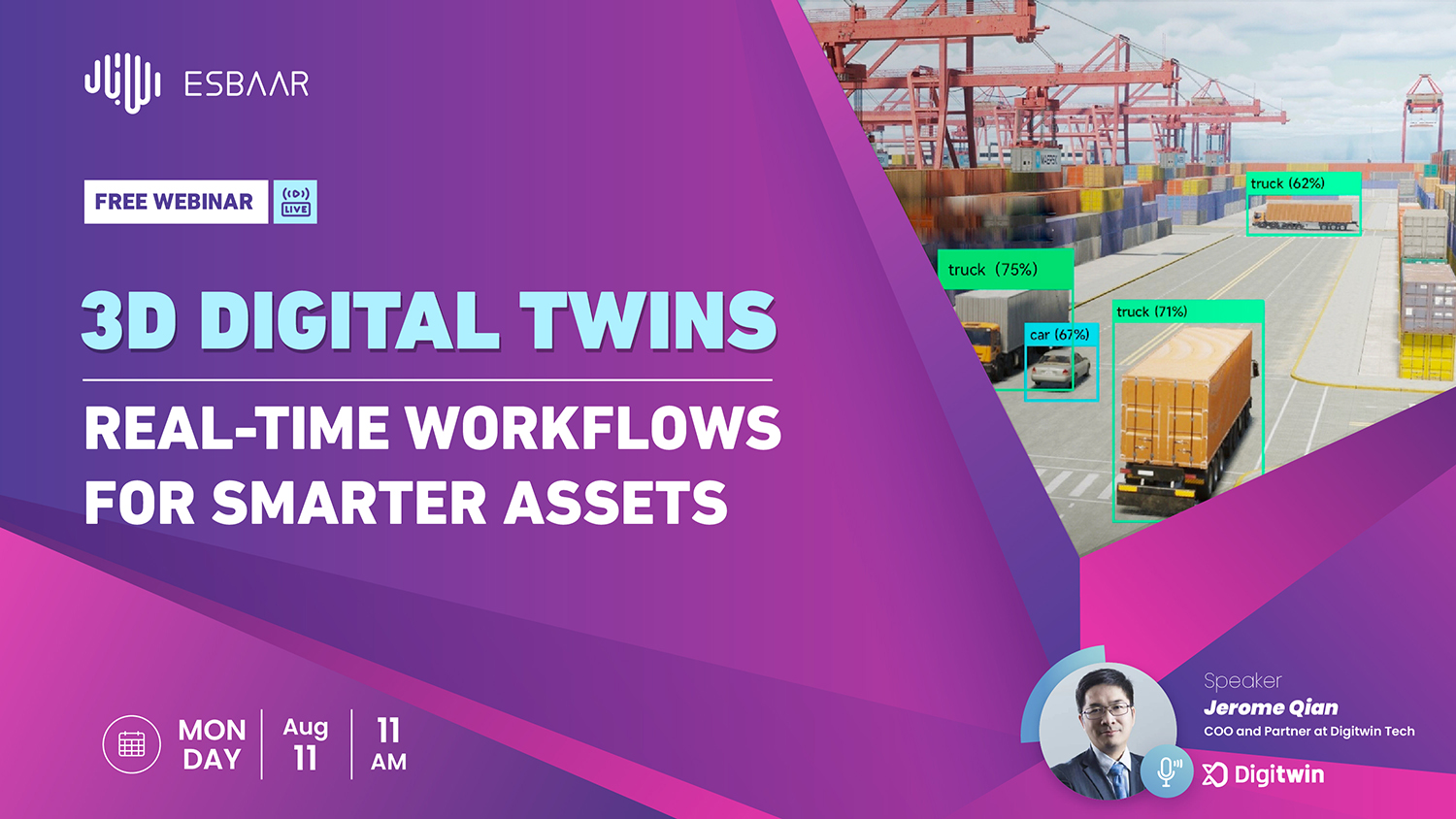3D Digital Twin Real-Time Workflows for Smarter Assets

On August 11, 2025, we hosted an insightful webinar titled “3D Digital Twin Real-Time Workflows for Smarter Assets”
The session was led by Jerome Qian (COO of Digitwin Tech), who guided over 50 engaged attendees through a practical look at how Digital Twin technology is transforming operations across industries.
The webinar went beyond theory, showing how digital twins connect physical assets to recorded live data streams, empowering teams to detect issues earlier, optimize decision-making, and maintain crystal-clear operational visibility.
1. Understanding the Digital Twin Concept
The session opened with a clear explanation of what a digital twin really is far more than just a 3D model. It’s a dynamic, virtual replica of a real-world asset that uses IoT sensors, AI, machine learning, and simulation to reflect and predict real-time conditions. This makes it possible to track the asset’s full lifecycle, from initial design to end-of-life management.
2. Why Digital Twins Matter
Attendees learned how digital twins enable faster issue detection, data-driven decision-making, and better long-term planning. By bridging the physical and digital worlds, teams can simulate scenarios, predict maintenance needs, and avoid costly downtime.
3. Key Benefits for Organizations
Jerome outlined benefits including:
- Real-time monitoring through live IoT data integration.
- Predictive maintenance to address issues before they become critical.
- Operational efficiency through optimized planning and resource allocation.
- Enhanced collaboration between engineering, operations, and management teams.
4. Practical Use Cases
Two real-world examples were showcased:
- Manufacturing optimization: Using digital twins to monitor equipment performance, simulate production changes, and boost output without interrupting operations.
- Smart infrastructure management: Enabling city planners to track utilities, traffic, and building performance for proactive upgrades and improved public services.
5. What Makes This Approach Unique
Jerome emphasized that Digitwin Tech’s platform is built for flexibility, capable of integrating with existing systems, scaling from single assets to entire operations, and supporting both on-premises and secure cloud deployments. Its real-time analytics dashboard is customizable, making it relevant for industries ranging from energy to logistics.
6. Deployment Options
Participants learned that they could host their digital twin fully on their own infrastructure for maximum control and data sovereignty, or use a trusted, regionally compliant cloud solution for faster implementation and reduced IT overhead.
7. Demonstration
A demo of the Digital Twin dashboard illustrated how physical asset changes are instantly reflected in the virtual model. The simulation tools were showcased in action demonstrating how to run predictive scenarios and monitor KPIs in real time.
8. Interactive Q&A
The Q&A session saw active participation, with questions about scalability, integration with legacy systems, and how AI-powered simulations can support decision-making in critical operations.
9. Certificate of Attendance
To recognize their engagement, all attendees received a Certificate of Attendance, affirming their commitment to staying ahead in the adoption of advanced industrial technologies.



